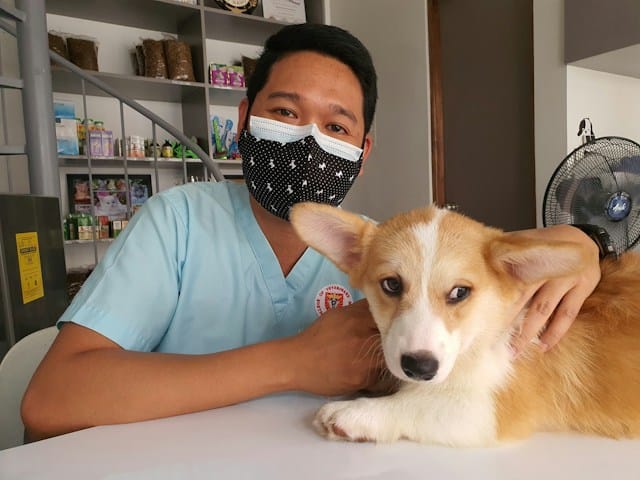What Are the Best Strategies for Crate Training a Nervous Beagle?

When it comes to crate training a nervous Beagle, the process can seem daunting. After all, Beagles are known for their high energy levels and inquisitive natures, which can make them a bit challenging to train. However, with the right approach, it’s absolutely possible to successfully crate train your Beagle, helping them to overcome any anxiety and become more comfortable in their crates. In this article, we’ll dive deep into the best strategies for crate training a nervous Beagle, from understanding the behavior of the breed to implementing positive reinforcement methods.
Understand Your Beagle’s Behavior
Before we start discussing the different strategies, it’s essential to understand the typical behaviors of a Beagle. Beagles are exceptionally curious dogs, and their keen sense of smell can often lead them astray. Their anxiety can stem from a variety of sources – separation anxiety, unfamiliar environments, loud noises – and it’s critical to identify the triggers before you begin the training process.
Sujet a lire : How to Properly Condition a Show Dog for the Ring?
Understanding your Beagle’s unique behavior and triggers will not only make you a more effective trainer, but it will also provide you with a deeper connection with your pet. If your Beagle associates the crate with a positive experience, they will be more likely to use it willingly and without fear. Establishing this positive association early on will make the crate training process much easier.
Start Crate Training Early
The best time to start crate training is when your Beagle is still a young puppy. This is because younger dogs are more adaptable and open to new experiences. That said, it’s never too late to start crate training. Even older dogs can learn new tricks, as the saying goes.
A lire en complément : What’s the Best Way to Train a Dog to Stop Counter-Surfing?
When you start crate training, remember that patience is key. Your dog may not immediately take to the crate, but with time and persistence, they will begin to see it as a safe and comforting space. Make sure that the crate is a comfortable size for your Beagle. It should be large enough for them to stand, turn around, and lie down comfortably, but not so large that they can use one corner as a potty area.
Use Positive Reinforcement
Positive reinforcement is one of the most effective strategies when training dogs, and Beagles are no exception. Using treats as a reward for good behavior can help your dog associate the crate with positive experiences. Remember, you want your dog to view the crate not as a punishment, but as a safe and comfortable space.
Start by placing treats inside the crate, encouraging your Beagle to enter on their own. Once they’re inside, praise them and give them a treat. Repeat this process several times until your Beagle is comfortable entering and exiting the crate on their own. Remember, patience is paramount at this stage. It may take time, but eventually, your Beagle will come to associate the crate with positive experiences.
Address Separation Anxiety
Many Beagles suffer from separation anxiety, which can make crate training more difficult. If your Beagle is anxious about being left alone, there are strategies you can use to help them feel more secure.
One of the best ways to help your Beagle overcome separation anxiety is to gradually increase the amount of time they spend in the crate. Start by leaving them in the crate for short periods of time while you’re still in the room. Gradually increase the duration and start leaving the room for brief periods. Over time, your Beagle will become more comfortable with being left alone in the crate.
Keep Consistent Training
Consistency is key in crate training your Beagle. The more consistent you are with your training, the more likely your dog will be to understand and adhere to the rules. Make sure all family members are on the same page about crate rules and training methods.
Crate training a nervous Beagle can be a challenge, but with time, patience, and consistency, it’s a very achievable goal. By understanding your pet’s behavior, starting training early, using positive reinforcement, addressing separation anxiety, and maintaining consistent training, you will be well on your way to a calmer, happier, and well-adjusted Beagle. Keep in mind that every dog is unique and what works for one may not work for another. Stay patient, remain persistent, and celebrate the small victories along the way.
Make the Crate a Comfortable Space
A critical step in crate training your Beagle is to ensure that the dog crate feels like a safe and cozy space for your pet. Remember, the goal is to make your Beagle view the crate as their personal sanctuary, not a place of punishment or confinement.
To achieve this, make the crate comfortable by adding soft bedding, a favorite blanket, or a chew toy. It can be beneficial to place the crate in an area of the house where your Beagle spends a lot of time. This way, the crate feels more like a part of their home territory. Make sure the crate door is always open when you’re not actively training so that the Beagle can enter and exit at will. This will help to further reinforce the positive association with the crate.
Introduce your Beagle to the crate in a calm and positive manner. Avoid forcing them into the crate, as this could make them more anxious. Instead, encourage them to explore the crate on their own. You can lure them in by placing a treat or toy inside the crate. Praise them when they enter the crate and give them a reward. This is a form of positive reinforcement that will help your Beagle associate the crate with positive experiences.
Remember that crate training is a gradual process. Start by having your Beagle spend short periods in the crate while you’re still in the room. Then, gradually increase the crate time and start leaving the room for brief periods. Being consistent with this process is paramount in successfully crate training your Beagle.
Dealing with Issues and Setbacks
As with any form of training, it’s natural to encounter bumps along the way. For instance, your Beagle may resist entering the crate, or suffer from dog separation anxiety once in the crate. It’s important to approach these issues with patience and understanding.
If your Beagle is reluctant to enter the crate, it could be due to a negative association. Ensure that the crate is comfortable and inviting, and try using more enticing rewards, like their favorite treat or toy. Use positive reinforcement consistently and continue to encourage them to enter the crate in a calm and positive manner.
For dog separation anxiety, increasing the crate time gradually will help your Beagle adjust to being alone. You may also want to try leaving a piece of your clothing in the crate. Your scent can be a source of comfort to them.
Consistency is crucial when dealing with these issues. Stick to the training routine and avoid changing the rules or expectations abruptly. Remember, crate training is not a quick fix. It takes time for a nervous Beagle to become comfortable in a crate.
Conclusion
Crate training a nervous Beagle may seem like a daunting task at first, but with persistence, patience, and the right strategies, it can be accomplished successfully. Understanding your Beagle’s behavior, creating a comfortable crate environment, using positive reinforcement, dealing with separation anxiety, and remaining consistent throughout the process are key to successful crate training.
The journey to successful crate training may be filled with challenges, but it’s important to remember that every small step is progress. Celebrate the small victories along the way, and before you know it, your Beagle will view their crate as a safe, comforting space.
Crate training your Beagle not only provides them with a safe space but also makes other aspects of pet care, such as potty training, travel, and vet visits, easier and less stressful. More importantly, it can help alleviate your Beagle’s anxiety and result in a happier and more secure pet. Your efforts will not only contribute to a well-behaved Beagle but will also deepen the bond between you and your furry friend.
